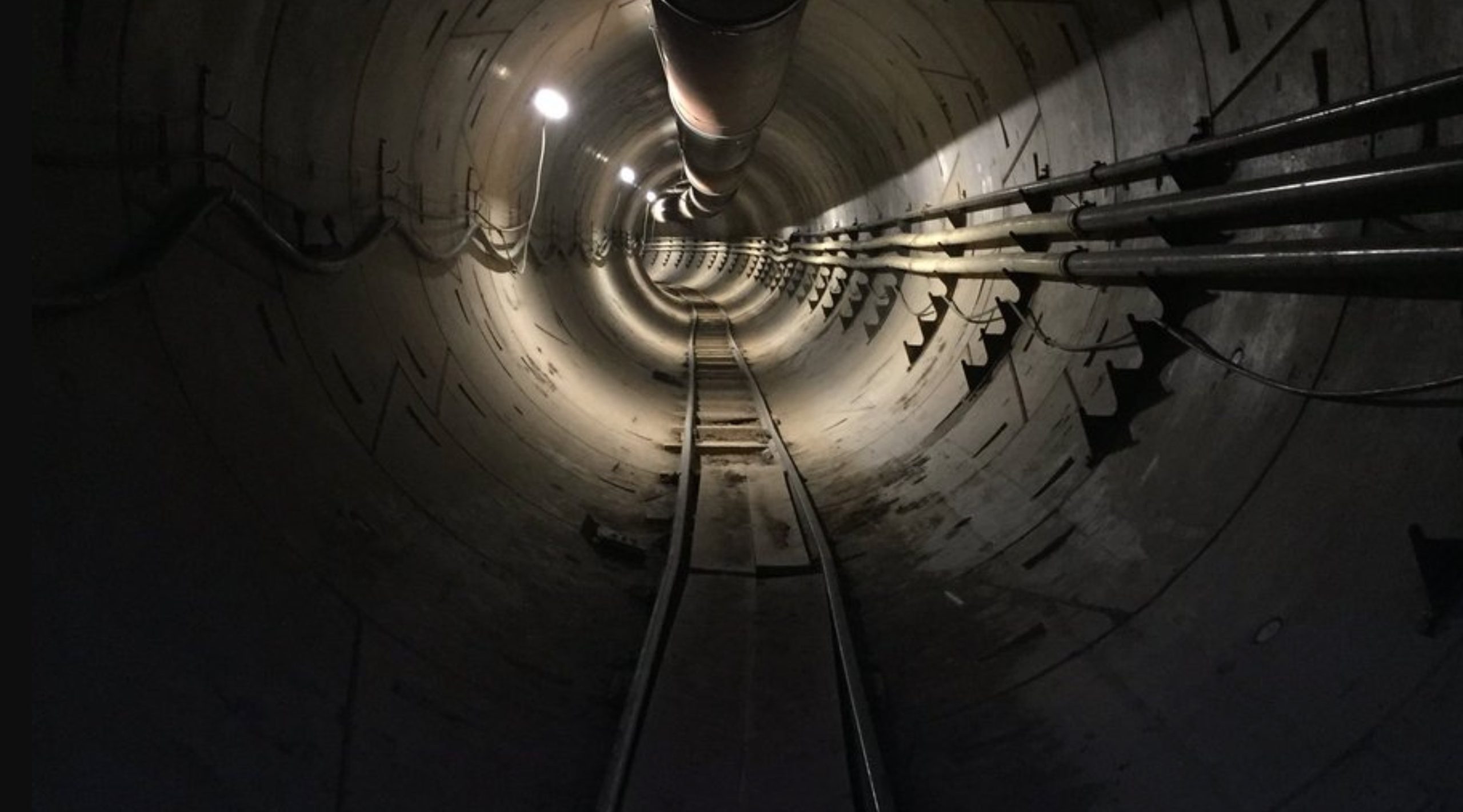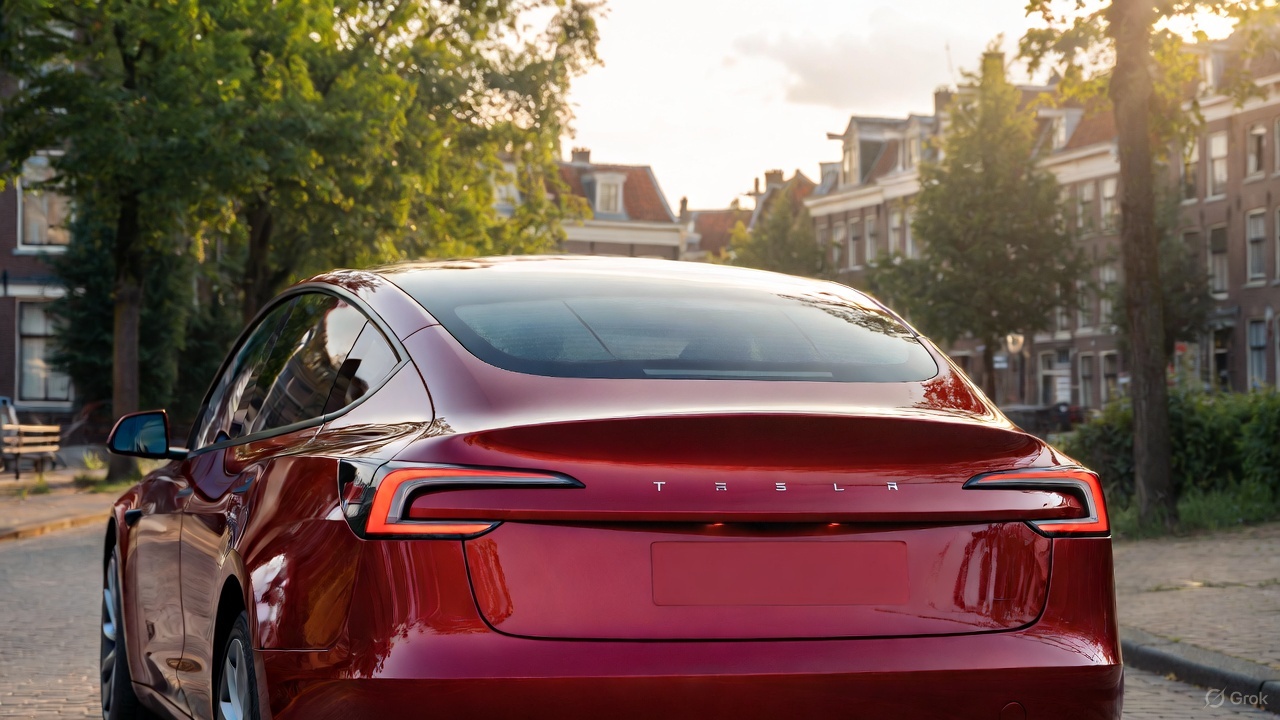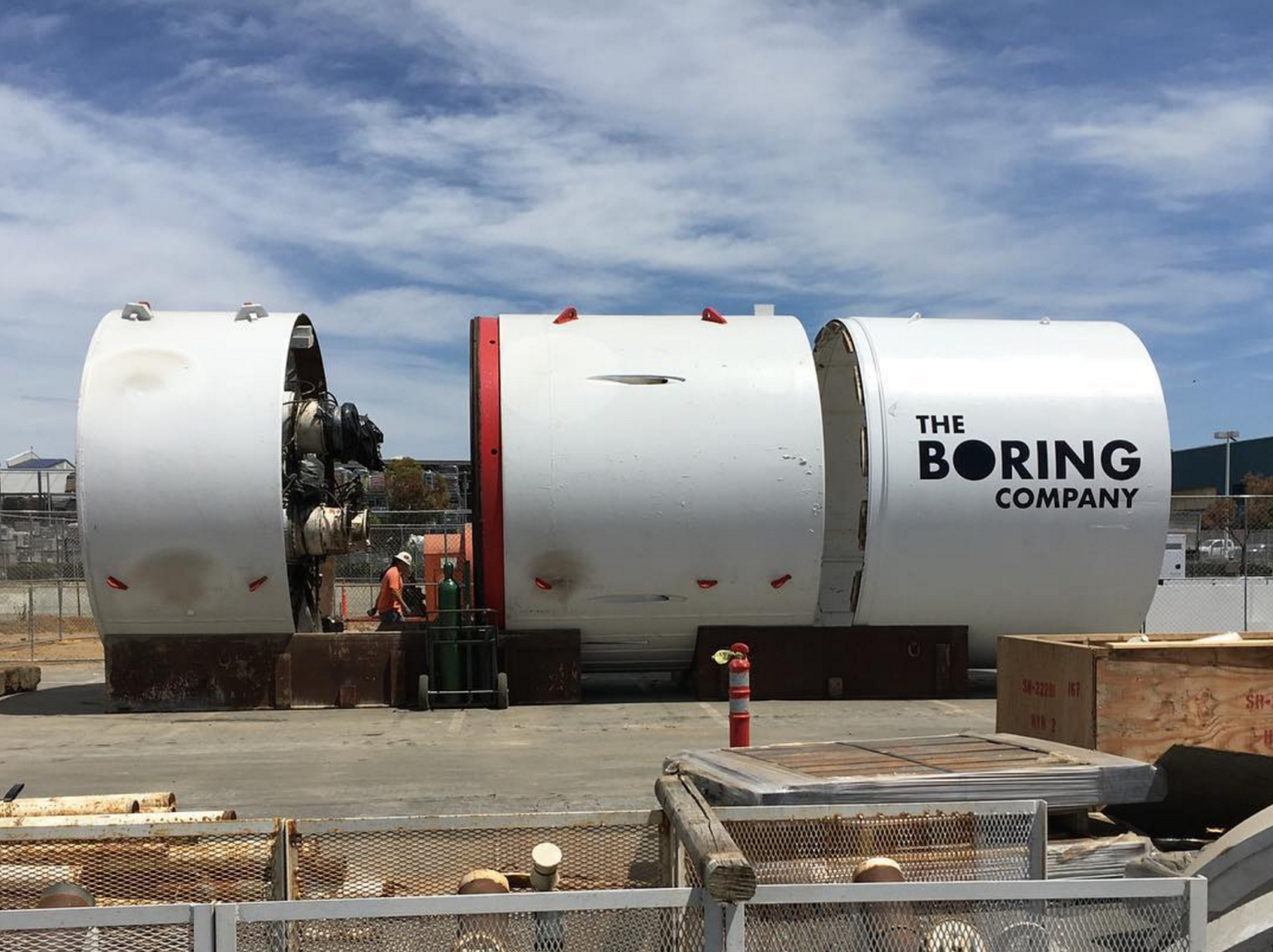

News
Elon Musk’s Boring Co. takes aim at fighting LA traffic
The Boring Company’s test tunnel that adjoins SpaceX and Tesla’s Design Center in Hawthorne, CA is really starting to take shape. Serial tech entrepreneur Elon Musk posted an image on Saturday that shows a long run of track, pipes and reinforcement inside a tunnel. In addition to providing a first look at a 500 feet stretch of The Boring Company’s test tunnel, Musk also revealed plans for the company’s first route that’s expected to begin from LAX airport and run parallel to major Los Angeles corridor, Interstate 405, and north to U.S. Route 101.
It doesn’t come as much of a surprise that Musk would choose this section as the company’s first project. After all, his dealing with constant soul-crushing traffic along a path of travel that’s a consistent winner of “America’s worst freeways” was the genesis for The Boring Company.
“First route will go roughly parallel to the 405 from LAX to 101, with on/offramps every mile or so. It will work like a fast freeway, where electric skates carrying vehicles and people on pods on the main artery travel at up to 150mph, and the skates switch to side tunnels to exit and enter.” says Musk.
Vehicles entering and exiting the tunnels would be helped by a car elevator, something Musk first demonstrated in July after posting a video of a Tesla Model S being lowered into the tunnel entrance. The use of side tunnels for exit and entry will allow the main tunnel to keep a consistent, high speed flow of traffic and make travel more efficient. It’s a key differentiator from traditional subway systems that often experience frequent stop-and-go travel. “There is a big difference compared to subways that stop at every stop, whether you’re getting off or not.” said Musk after sharing an image of the test tunnel.
Picture of The Boring Company LA tunnel taken yesterday pic.twitter.com/TfdVKyXFsJ
— Elon Musk (@elonmusk) October 28, 2017
In addition to the tunnel project taking place in Los Angeles, The Boring Company has recently been given permission by Maryland officials to dig a 10.1-mile tunnel beneath state-owned land that looks to connect Baltimore with Washington, DC. “Incredibly excited to announce our administration’s support for The Boring Company to bring rapid electric transportation technology to Maryland, connecting Baltimore City and Washington D.C.” said Maryland Governor Larry Hogan on October 19 in a Facebook post.
As The Boring Company continues to build its 2-mile test tunnel that’s located a stone’s throw away from LAX, it’s expected that the team will also continue to learn techniques that will allow them to maximize efficiencies with tunnel digging and moving earth. Musk revealed at TED 2017, in a sit-down with head curator Chris Anderson, that The Boring Company plans to cut tunnel diameter by 50% for passenger vehicles and reduce the cross sectional area of tunnels by a factor of four. Building a smaller tunnel that’s just large enough for a vehicle will cut 75% of the time associated with digging and introduce a significant cost reduction.
Unlike traditional tunnel boring machines that dig slowly and incrementally, as it stops so that a team can build tunnel reinforcements, Musk’s GoDot digger looks to install tunnel walls continuously. Being able to build reinforcements into a tunnel while it’s being dug eliminates the need to pause operations, thus speeding up the entire process.
Though Musk’s vision to build a high speed underground transportation system in major cities might face opposition from local regulators at first, visibility of progress being made by The Boring Company in Los Angeles and beyond, and ultimately the cost savings involved with such projects will lead to the eureka moment for government officials worldwide.
Why wait nine years on a $1.5 billion “beach shuttle” when you can do it in less than half the time and at a fraction of the cost? Eureka.

Elon Musk
Tesla CEO Elon Musk sends rivals dire warning about Full Self-Driving

Tesla CEO Elon Musk revealed today on the social media platform X that legacy automakers, such as Ford, General Motors, and Stellantis, do not want to license the company’s Full Self-Driving suite, at least not without a long list of their own terms.
“I’ve tried to warn them and even offered to license Tesla FSD, but they don’t want it! Crazy,” Musk said on X. “When legacy auto does occasionally reach out, they tepidly discuss implementing FSD for a tiny program in 5 years with unworkable requirements for Tesla, so pointless.”
I’ve tried to warn them and even offered to license Tesla FSD, but they don’t want it! Crazy …
When legacy auto does occasionally reach out, they tepidly discuss implementing FSD for a tiny program in 5 years with unworkable requirements for Tesla, so pointless. 🤷♂️
🦕 🦕
— Elon Musk (@elonmusk) November 24, 2025
Musk made the remark in response to a note we wrote about earlier today from Melius Research, in which analyst Rob Wertheimer said, “Our point is not that Tesla is at risk, it’s that everybody else is,” in terms of autonomy and self-driving development.
Wertheimer believes there are hundreds of billions of dollars in value headed toward Tesla’s way because of its prowess with FSD.
A few years ago, Musk first remarked that Tesla was in early talks with one legacy automaker regarding licensing Full Self-Driving for its vehicles. Tesla never confirmed which company it was, but given Musk’s ongoing talks with Ford CEO Jim Farley at the time, it seemed the Detroit-based automaker was the likely suspect.
Tesla’s Elon Musk reiterates FSD licensing offer for other automakers
Ford has been perhaps the most aggressive legacy automaker in terms of its EV efforts, but it recently scaled back its electric offensive due to profitability issues and weak demand. It simply was not making enough vehicles, nor selling the volume needed to turn a profit.
Musk truly believes that many of the companies that turn their backs on FSD now will suffer in the future, especially considering the increased chance it could be a parallel to what has happened with EV efforts for many of these companies.
Unfortunately, they got started too late and are now playing catch-up with Tesla, XPeng, BYD, and the other dominating forces in EVs across the globe.
News
Tesla backtracks on strange Nav feature after numerous complaints

Tesla is backtracking on a strange adjustment it made to its in-car Navigation feature after numerous complaints from owners convinced the company to make a change.
Tesla’s in-car Navigation is catered to its vehicles, as it routes Supercharging stops and preps your vehicle for charging with preconditioning. It is also very intuitive, and features other things like weather radar and a detailed map outlining points of interest.
However, a recent change to the Navigation by Tesla did not go unnoticed, and owners were really upset about it.
For trips that required multiple Supercharger stops, Tesla decided to implement a naming change, which did not show the city or state of each charging stop. Instead, it just showed the business where the Supercharger was located, giving many owners an unwelcome surprise.
However, Tesla’s Director of Supercharging, Max de Zegher, admitted the update was a “big mistake on our end,” and made a change that rolled out within 24 hours:
The naming change should have happened at once, instead of in 2 sequential steps. That was a big miss on our end. We do listen to the community and we do course-correct fast. The accelerated fix rolled out last night. The Tesla App is updated and most in-car touchscreens should…
— Max (@MdeZegher) November 20, 2025
The lack of a name for the city where a Supercharging stop would be made caused some confusion for owners in the short term. Some drivers argued that it was more difficult to make stops at some familiar locations that were special to them. Others were not too keen on not knowing where they were going to be along their trip.
Tesla was quick to scramble to resolve this issue, and it did a great job of rolling it out in an expedited manner, as de Zegher said that most in-car touch screens would notice the fix within one day of the change being rolled out.
Additionally, there will be even more improvements in December, as Tesla plans to show the common name/amenity below the site name as well, which will give people a better idea of what to expect when they arrive at a Supercharger.
News
Dutch regulator RDW confirms Tesla FSD February 2026 target
The regulator emphasized that safety, not public pressure, will decide whether FSD receives authorization for use in Europe.

The Dutch vehicle authority RDW responded to Tesla’s recent updates about its efforts to bring Full Self-Driving (Supervised) in Europe, confirming that February 2026 remains the target month for Tesla to demonstrate regulatory compliance.
While acknowledging the tentative schedule with Tesla, the regulator emphasized that safety, not public pressure, will decide whether FSD receives authorization for use in Europe.
RDW confirms 2026 target, warns Feb 2026 timeline is not guaranteed
In its response, which was posted on its official website, the RDW clarified that it does not disclose details about ongoing manufacturer applications due to competitive sensitivity. However, the agency confirmed that both parties have agreed on a February 2026 window during which Tesla is expected to show that FSD (Supervised) can meet required safety and compliance standards. Whether Tesla can satisfy those conditions within the timeline “remains to be seen,” RDW added.
RDW also directly addressed Tesla’s social media request encouraging drivers to contact the regulator to express support. While thanking those who already reached out, RDW asked the public to stop contacting them, noting these messages burden customer-service resources and have no influence on the approval process.
“In the message on X, Tesla calls on Tesla drivers to thank the RDW and to express their enthusiasm about this planning to us by contacting us. We thank everyone who has already done so, and would like to ask everyone not to contact us about this. It takes up unnecessary time for our customer service. Moreover, this will have no influence on whether or not the planning is met,” the RDW wrote.
The RDW shares insights on EU approval requirements
The RDW further outlined how new technology enters the European market when no existing legislation directly covers it. Under EU Regulation 2018/858, a manufacturer may seek an exemption for unregulated features such as advanced driver assistance systems. The process requires a Member State, in this case the Netherlands, to submit a formal request to the European Commission on the manufacturer’s behalf.
Approval then moves to a committee vote. A majority in favor would grant EU-wide authorization, allowing the technology across all Member States. If the vote fails, the exemption is valid only within the Netherlands, and individual countries must decide whether to accept it independently.
Before any exemption request can be filed, Tesla must complete a comprehensive type-approval process with the RDW, including controlled on-road testing. Provided that FSD Supervised passes these regulatory evaluations, the exemption could be submitted for broader EU consideration.









